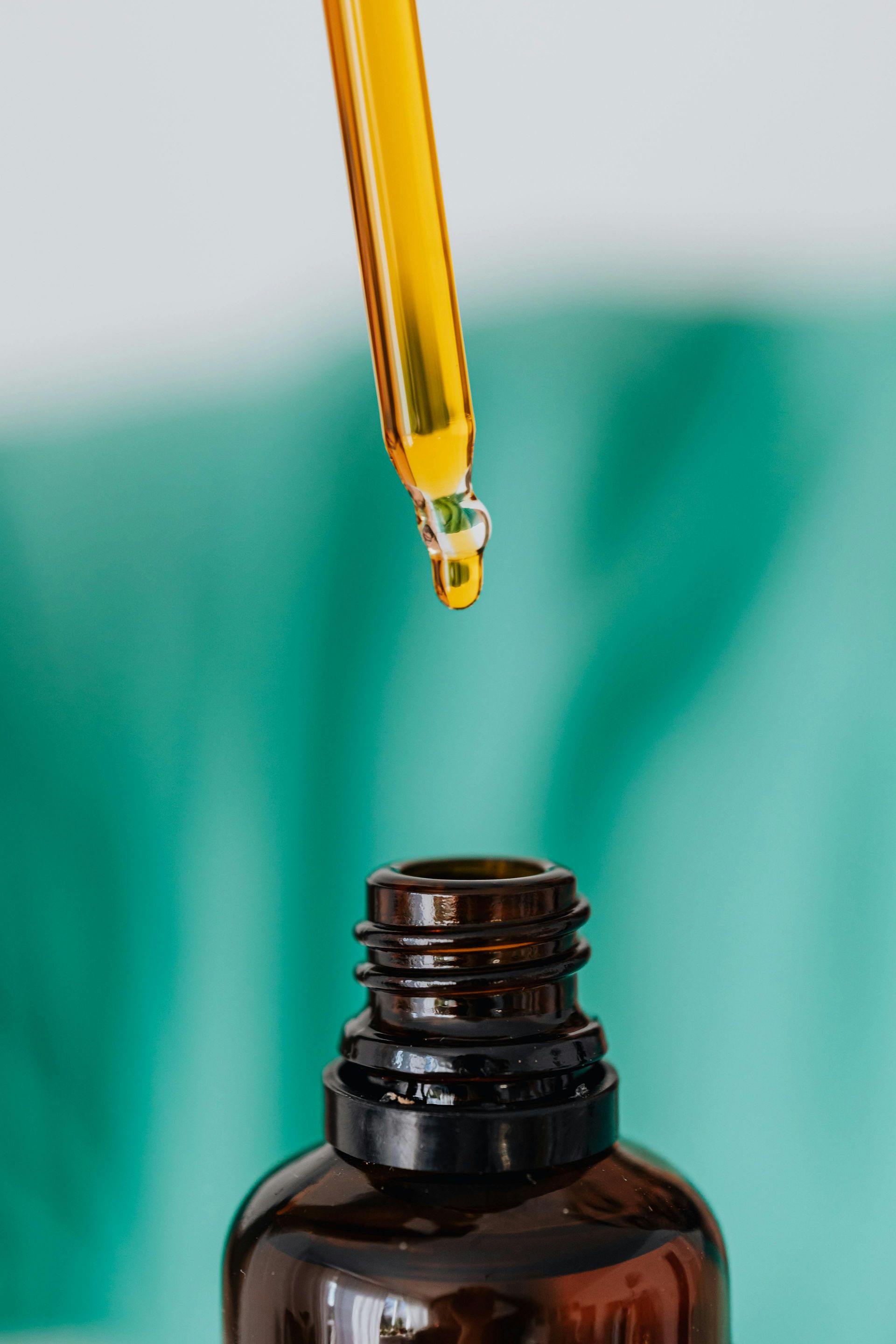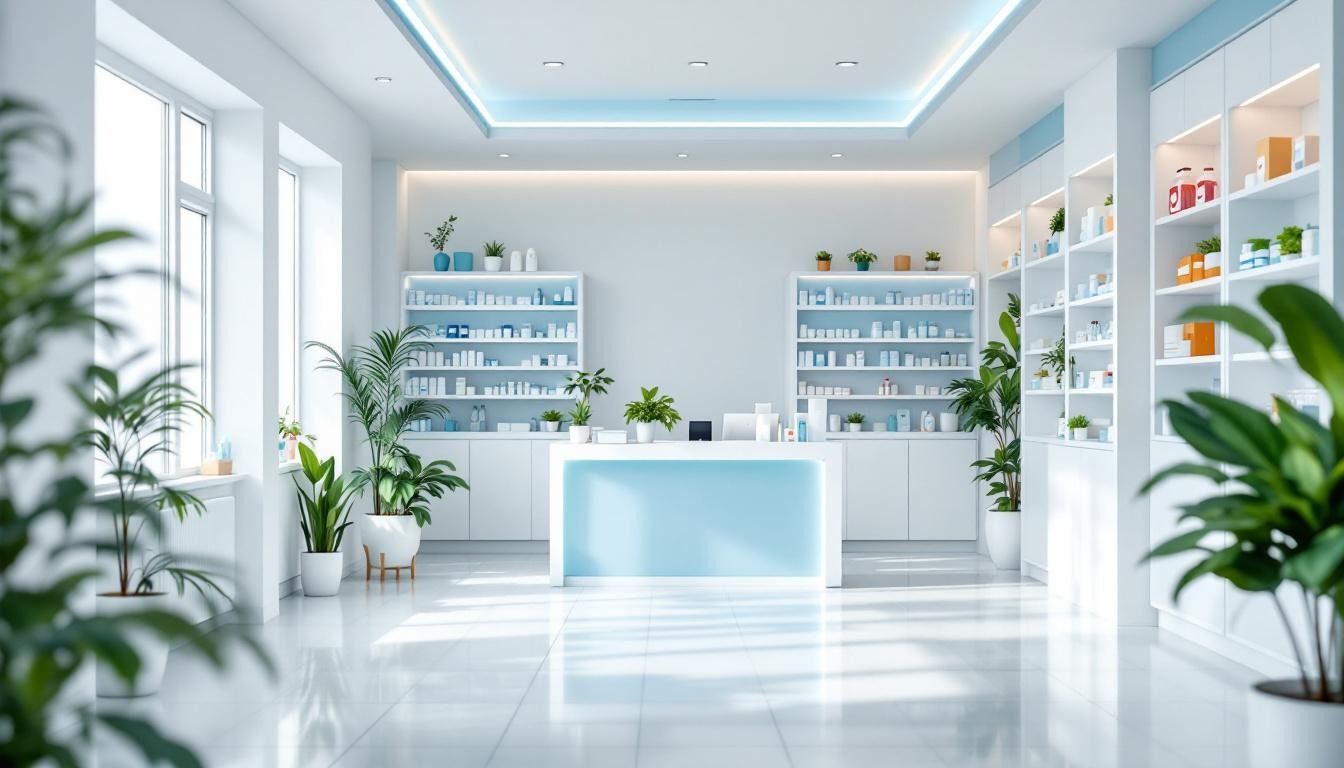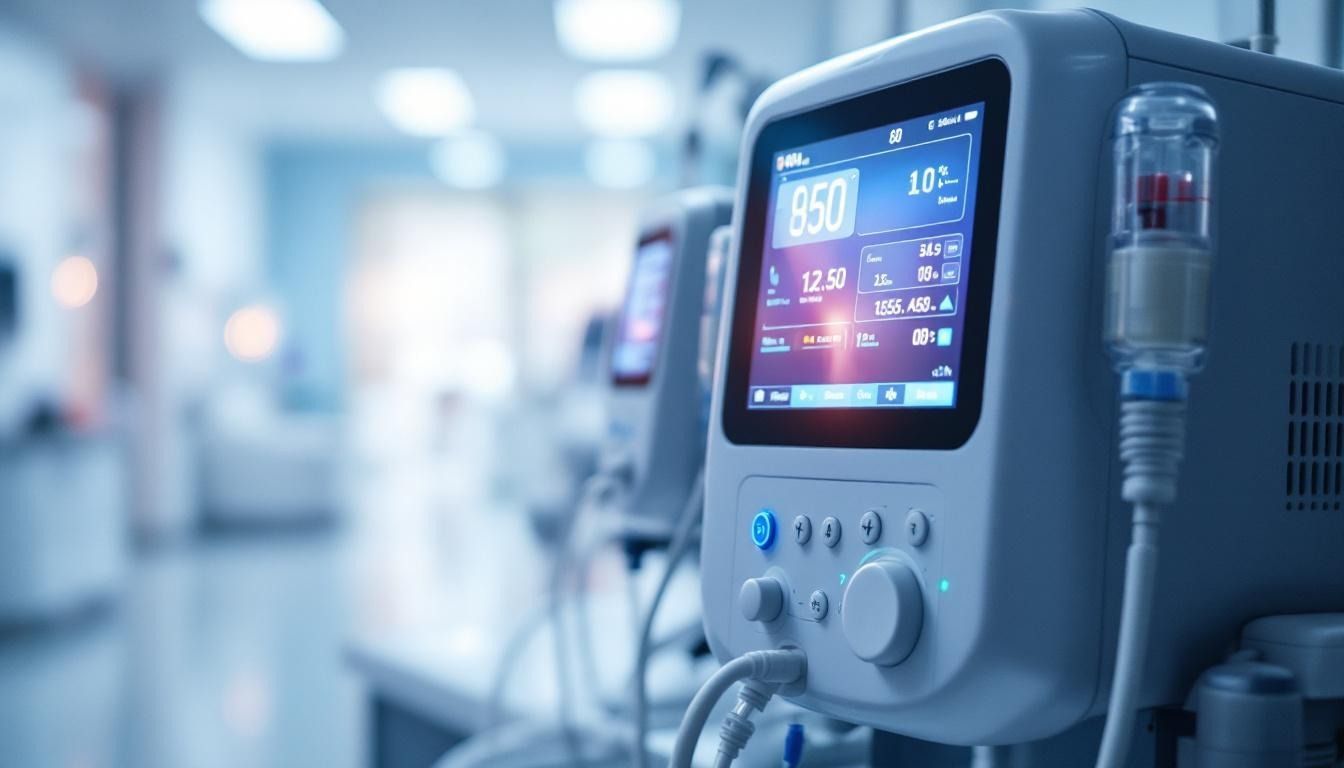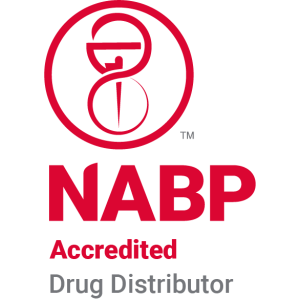Are injectables safe when sterile-compounded?
Injectable medications are vital components of modern healthcare, used in a variety of settings from hospitals to outpatient clinics. The safety and efficacy of these drugs hinge on the sterility of their preparation, especially when compounded outside of manufacturer settings. This article explores the essential practices, regulatory standards, risks, and mitigation strategies associated with sterile compounding, emphasizing the importance of maintaining sterility to protect patient health.
Understanding the Importance of Sterility in Injectables

Are injections required to be sterile?
Injections must be sterile to ensure patient safety. Using sterile, single-use needles and syringes for each individual patient is a fundamental practice that prevents the transmission of serious infections such as hepatitis B, hepatitis C, and HIV. Proper techniques involve using a new sterile device for every injection and careful aseptic procedures during preparation and administration.
Whenever possible, single-dose vials should be used for only one patient and discarded after a single use. Multi-dose vials can be safely utilized if they are dedicated to a single patient and accessed within a clean environment adhering to standards like USP <797>. This ensures a controlled, contamination-free environment crucial for safe injections.
Strict infection control practices, proper handling, and adherence to established sterilization protocols are vital in preventing infection and safeguarding health. These practices help prevent outbreaks caused by unsafe injection procedures and emphasize that injections are inherently required to be sterile to minimize risks.
Regulatory Standards and Best Practices to Safeguard Sterility
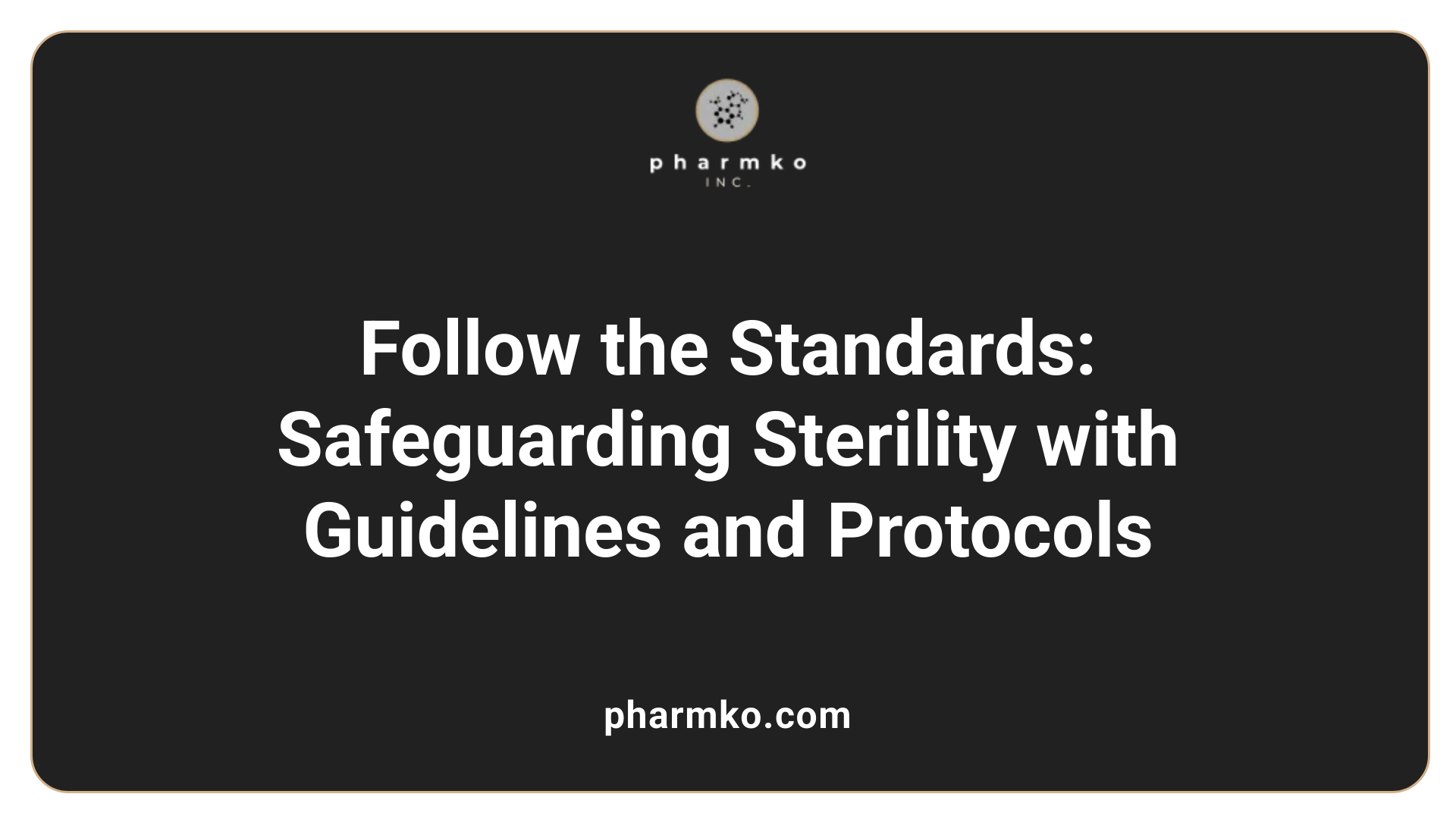
What are the regulatory standards and guidelines for sterile compounding?
Sterile compounding in healthcare settings is governed by comprehensive standards that aim to ensure medication safety and patient protection. The primary framework is provided by the United States Pharmacopeia (USP), especially chapters <797> and <797> which set enforceable rules for sterile preparations. These standards specify requirements for facility design, environmental controls, personnel training, equipment validation, and workflow practices.
The American Society of Health-System Pharmacists (ASHP) offers additional detailed protocols and best practices that complement USP guidelines, reinforcing the importance of maintaining aseptic techniques and environmental integrity.
Federal agencies like the Food and Drug Administration (FDA) oversee the safety of drug ingredients and manufacturing processes, emphasizing that compounded medications should be prepared only from FDA-registered sources of ingredients. The CDC provides injection safety protocols, including using sterile needles and syringes, handling vials properly, and following strict aseptic techniques.
Together, these standards form a layered defense to prevent contamination, infection transmission, and drug diversion, helping safeguard patient health during sterile compounding.
How do contamination and contamination prevention impact the safety of compounded injectables?
Contamination in compounded injectables can lead to serious health risks, including bacterial infections, fungal outbreaks, and contamination-related morbidity or mortality. Ensuring the sterility of these medications is crucial because even tiny microbial traces can cause severe infections once injected.
Preventive measures focus on rigorous aseptic techniques during preparation, handling, and administration. This includes proper hand hygiene, disinfecting vial septa before use, changing needles and syringes for each entry, and avoiding reuse of sterile components. Facility design is also vital; sterile environments should follow USP <797> standards, featuring unidirectional airflow, HEPA-filtered laminar flow hoods, and controlled temperature and humidity.
Regular environmental monitoring, staff competency assessments, and validated sterilization processes are essential to detect and prevent contamination sources. Implementing these strategies minimizes microbial risks and preserves the integrity of compounded injectables, directly impacting patient safety and the overall quality of care.
Ensuring Safety through Facility Design and Personnel Practices
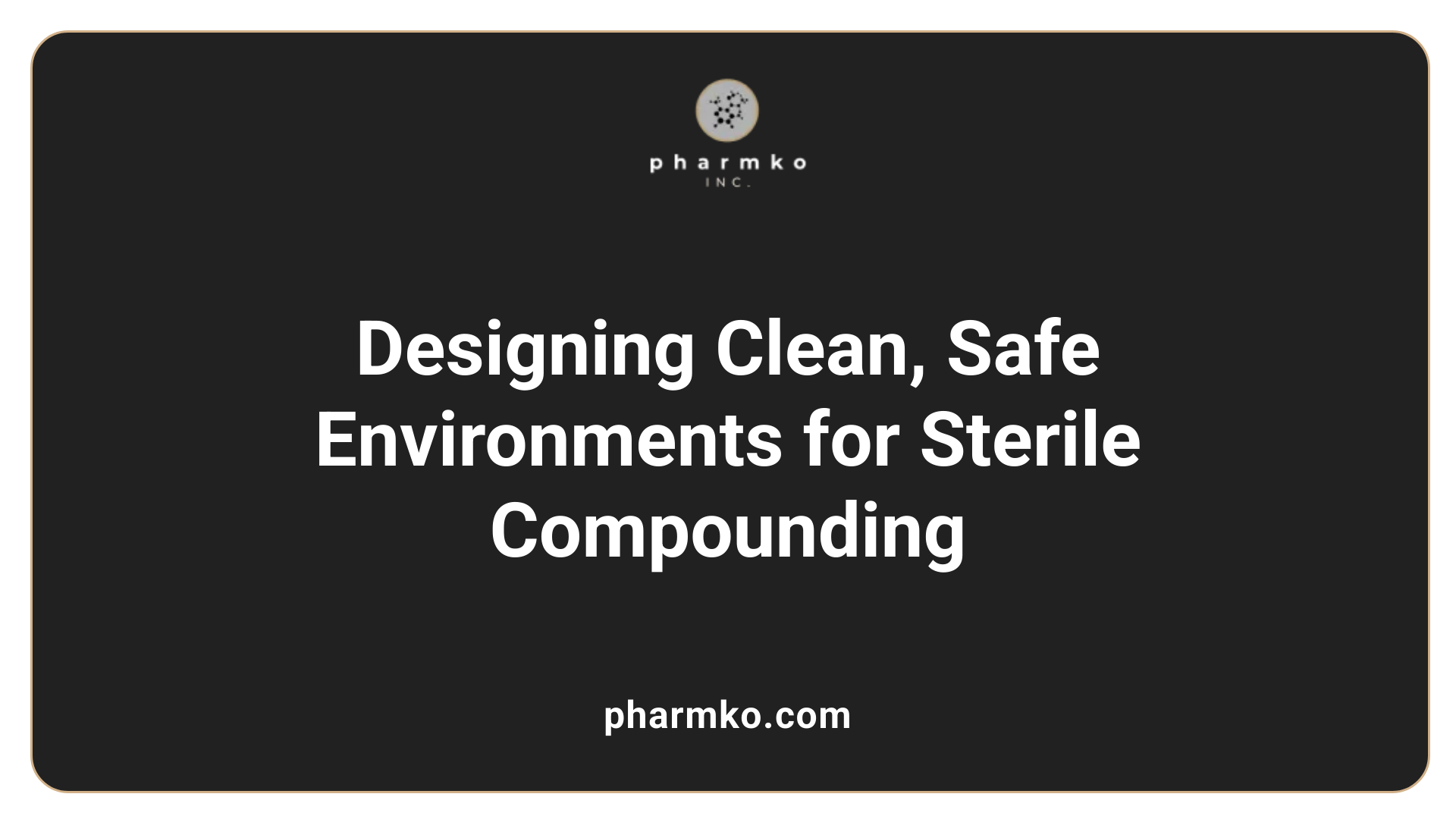
What are the standards for cleanroom environments in sterile compounding?
Cleanroom environment standards are critical for maintaining sterility in compounded medications. These facilities must meet ISO Class 7 standards for buffer areas and ISO Class 8 standards for ante areas. These classifications specify the maximum allowable quantities of airborne particles, ensuring a highly controlled environment.
Sterile compounding rooms are equipped with unidirectional HEPA-filtered airflow systems, which continually remove airborne contaminants. These systems are designed to maintain a positive pressure environment, preventing unfiltered air from entering. In addition, proper environmental controls, including temperature and humidity regulation, support optimal conditions for sterilization.
Strict protocols are followed for cleaning and disinfecting these rooms, utilizing designated cleaning agents and procedures to minimize microbial presence. Regular environmental monitoring, including particulate and microbial testing, is conducted to verify that standards are maintained, ensuring a safe space for sterile preparations.
How is personal protective equipment (PPE) utilized, and why are aseptic techniques important?
PPE such as gowns, gloves, masks, and eye protection plays an essential role in preventing contamination during sterile compounding. Personnel are trained to properly don and doff PPE to avoid introducing microbes into the environment.
Aseptic techniques are employed throughout the compounding process. This involves thorough hand hygiene, disinfecting vial septa before entry, and working within sterile hoods or cleanrooms. Gloves are changed frequently, especially after touching non-sterile items or surfaces.
Using sterile gloves, gowns, and masks helps create a barrier between personnel and sterile products. Masks are particularly important during procedures such as epidural or spinal injections to prevent bacterial contamination.
How do environmental monitoring and validation ensure ongoing safety?
Environmental monitoring involves regular testing of air, surfaces, and personnel to detect microbial and particulate contamination. Sampling methods include settle plates, contact plates, and air samplers.
Validation processes verify that sterilization and environmental controls function correctly. This includes testing sterilizing equipment such as autoclaves via biological indicators, and validation of airflow and filtration systems with bubble point testing.
Sterility testing of compounded products, especially those stored for extended periods, is performed in accordance with USP <71>. This ensures the products remain free of microbial contamination before release.
Routine environmental monitoring coupled with validation activities helps identify potential issues early, allowing corrective actions to prevent contamination outbreaks.
How does routine sterilization validation uphold safety standards?
Sterilization validation confirms that sterilization processes effectively eliminate microorganisms from equipment and products. This involves validation methods like autoclaving with biological indicators and filter validation via bubble point testing.
Each batch of sterile product undergoes rigorous testing, including sterility tests and endotoxin assessments, to ensure compliance with standards. Validation procedures are documented, and processes are regularly reviewed to adapt to new challenges.
In addition, staff training on sterilization practices, along with routine maintenance of sterilization equipment and environmental controls, ensures the integrity of the sterilization process.
How do safety protocols, environment standards, and personnel practices combine to prevent contamination?
Combining strict facility design, robust PPE use, aseptic techniques, continuous environmental monitoring, and validated sterilization processes establishes multiple barriers against microbial contamination.
These practices are reinforced through regular staff training, competency assessments, and adherence to guidelines such as USP <797>. This comprehensive approach minimizes risks, prevents outbreaks, and ensures the safe preparation of sterile medications.
| Aspect | Standards & Practices | Purpose | Reference |
|---|---|---|---|
| Cleanroom Environment | ISO Class 7 for buffers, ISO Class 8 for ante areas, HEPA filtration | Minimize airborne microbes | USP <797>, ISO standards |
| PPE and Aseptic Technique | Gowning, gloves, masks, frequent disinfection | Prevent personnel contamination | CDC, USP <797> |
| Environmental Monitoring | Microbial and particulate testing | Detect contamination early | USP <797>, CDC guidelines |
| Sterilization Validation | Biological indicators, bubble point testing | Confirm sterilization efficacy | USP <71>, validation protocols |
Understanding and diligently applying these standards help ensure medications are prepared safely, reducing infection risks and protecting patient health.
The Role of Validation, Testing, and Staff Training
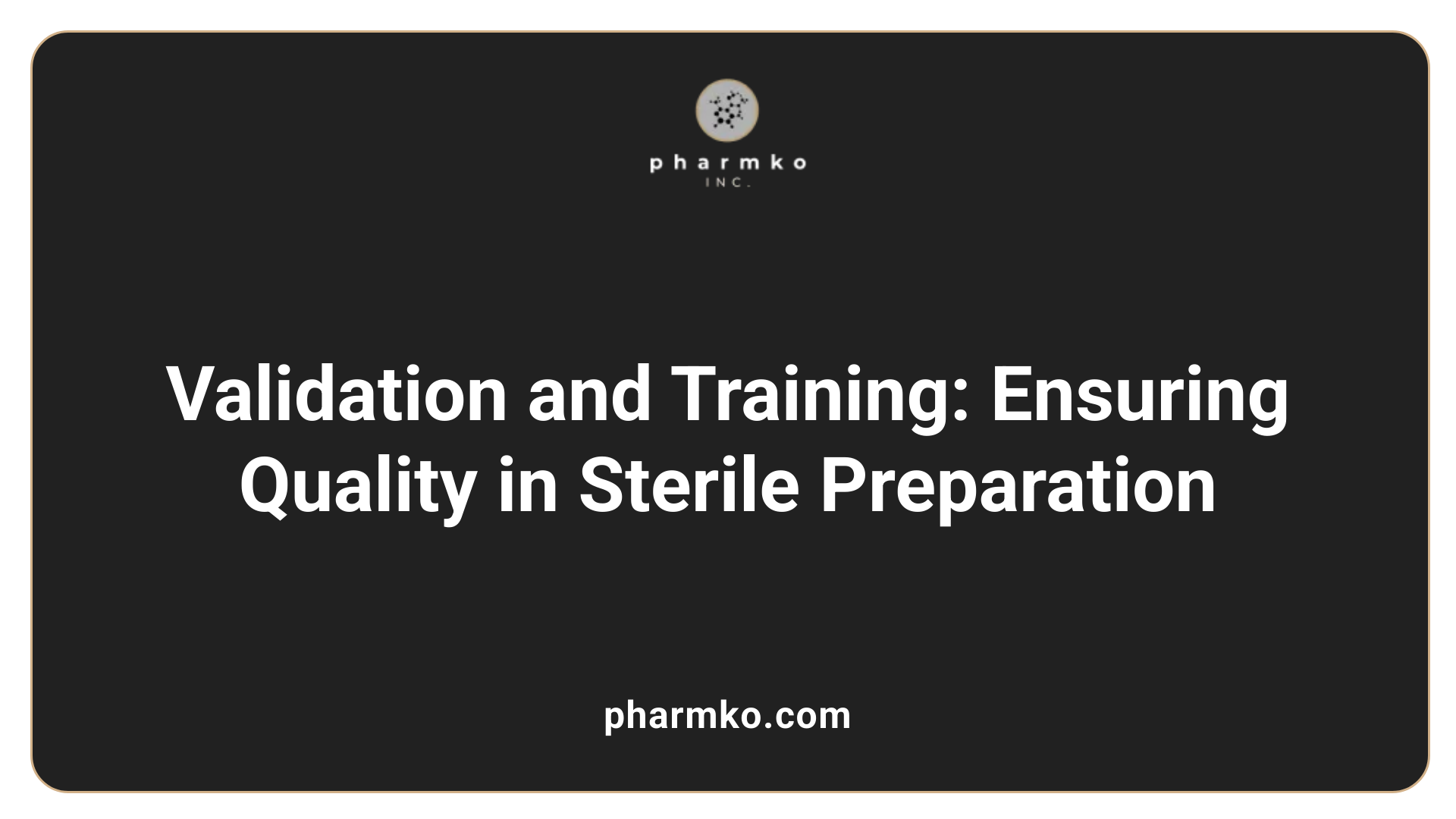
How does contamination and contamination prevention impact the safety of compounded injectables?
Contamination poses a serious threat to the safety of compounded injectables as it can lead to infections, outbreaks, and adverse patient outcomes. To prevent contamination, strict aseptic techniques must be followed during every step of preparation and administration. This includes using sterilized equipment, disinfecting vial septa properly, and maintaining clean working environments. Facilities must adhere to validated sterilization protocols, often validated through tests like bubble point testing for filters and environmental monitoring. High-efficiency particulate air (HEPA) filters, controlled airflow in ISO-classified rooms, and routine cleaning all help minimize microbial presence. Guidelines such as USP <797> and CDC standards guide proper practices in sterile environments. Regular environmental sampling and microbial testing ensure that protocols effectively prevent contamination. By implementing these rigorous measures, healthcare providers can significantly reduce the risk of microbial contamination, ensuring that compounded injectables are safe, effective, and reliable for patient use.
What is the importance of staff training and competency assessment in sterile compounding?
The safety and quality of sterile compounded medications heavily rely on the skill level of compounding personnel. Staff training ensures that all team members understand aseptic techniques, proper handling procedures, and environmental controls. Ongoing competency assessments, including media-fill testing and glove fingertip sampling, are essential to verify that personnel can consistently perform procedures without contaminating products. Regular training sessions also update staff on evolving standards, new techniques, and regulatory requirements. Properly trained staff can identify and mitigate risks of contamination, maintain sterile environments, and operate equipment correctly. This reduces human error and enhances compliance with USP <797> standards and other regulations. Ultimately, continuous education and evaluation cultivate a culture of safety, ensuring consistent quality of compounded products and safeguarding patient health.
What are sterility testing procedures (USP <71>)?
Sterility testing verifies that compounded sterile preparations (CSPs) are free from microbial contamination before release. According to USP <71>, the procedure involves incubating samples of the final product in specific culture media for 14 days under controlled conditions. This test detects bacteria and fungi that may have survived sterilization. The process includes sample inoculation, incubation, and inspection for microbial growth. Validation of sterilization processes, such as autoclaving or filtration, is a prerequisite to reliable testing. Filtration products often undergo bubble point testing to confirm filter integrity. Regular sterility testing assures that products meet safety standards, helps identify contamination sources, and verifies the effectiveness of sterilization methods.
How does equipment validation and maintenance ensure sterile conditions?
Equipment validation is critical to confirm that sterilizers, filters, laminar flow hoods, and environmental controls operate correctly and consistently. Validation procedures include initial qualification, periodic re-validation, and ongoing monitoring. For example, autoclaves are validated through biological and chemical indicators, ensuring proper temperature, pressure, and duration. HEPA filters undergo integrity testing like bubble point tests. Dedicated maintenance schedules, calibration, and routine inspections prevent equipment failures that could compromise sterility. Well-maintained, validated equipment supports the aseptic environment required for sterile compounding and reduces the risk of contamination.
Why are competency assessments and ongoing training necessary?
Sterile compounding is a complex process that requires precise skills and adherence to protocols. Competency assessments, such as media-fill testing, evaluate whether personnel can reliably perform procedures without contaminating products. Ongoing training updates staff on new guidelines, techniques, and safety practices. It also reinforces the importance of environmental controls, hand hygiene, and proper use of PPE. Regular assessments and training maintain high standards, reduce errors, and promote a safety culture within the pharmacy or facility. They are essential for compliance, product quality, and protecting patient safety.
How does continuous quality improvement contribute to sterile compounding?
Continuous quality improvement (CQI) involves regularly reviewing processes, monitoring outcomes, and implementing enhancements in sterile compounding practices. Through audits, environmental monitoring data, and staff feedback, facilities identify areas for improvement. Updating protocols, retraining staff, and investing in newer technologies help maintain compliance with evolving standards. Implementing CQI reduces contamination risks, increases efficiency, and ensures the consistent safety and efficacy of compounded medications. It fosters a proactive approach to patient safety, aligning daily operations with best practices and regulatory expectations.
| Topic | Details | Additional Notes |
|---|---|---|
| Sterility testing (USP <71>) | Incubation for 14 days, detection of bacteria and fungi, validation of sterilization processes | Critical for batch release and safety assurance |
| Equipment validation | Biological indicators for autoclaves, bubble point tests for filters, calibration and maintenance schedules | Ensures equipment effectiveness and reliability |
| Staff training | Regular competency assessments, media-fill testing, continuous education | Reduces human error, promotes safety |
| Continuous improvement | Data analysis, environmental monitoring, protocol updates, staff feedback | Maintains high standards, adapts to changes |
Adhering to these practices helps ensure sterile preparations remain free from infection, safeguarding patient health and supporting reliable healthcare delivery.
Maintaining the Highest Standards for Injectable Safety
The safety of sterile compounded injectables depends on rigorous adherence to established standards, meticulous environmental controls, diligent personnel training, and robust validation procedures. While perfect sterility can never be guaranteed, implementing comprehensive safety protocols significantly reduces contamination risks, ensuring that patients receive safe, effective injectable medications. Healthcare providers and pharmacies must remain vigilant and continually update their practices in line with evolving regulations and technological advancements to uphold the highest standards of patient care.
References
- Preventing Unsafe Injection Practices | Injection Safety - CDC
- Sterile Compounding Injections: Things You Need to Know
- [PDF] ASHP Guidelines on Compounding Sterile Preparations
- Compounding and the FDA: Questions and Answers
- FDA reminds compounders to use ingredients suitable for sterile ...
- [PDF] ICAR Tool for General Infection and Control (IPC) Across Settings
- Sterile Compounding - Your Local Dunwoody Pharmacy



